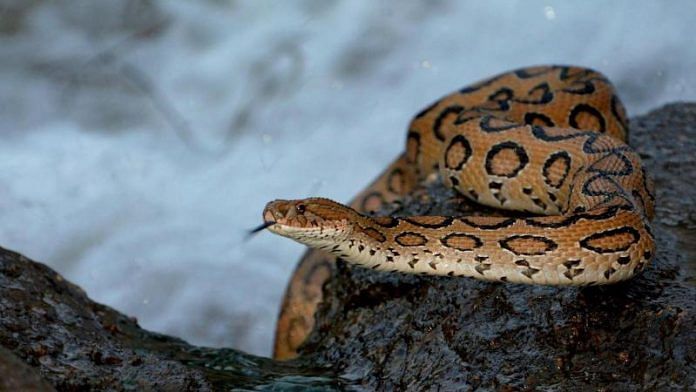Bengaluru: A new study has found the first direct evidence that venomous glands originated from early salivary glands.
The research, authored by Agneesh Barua and Alexander S. Mikheyev of the Ecology and Evolution Unit at Okinawa Institute of Science and Technology in Japan, found that mammals and snakes share a set of genes that are controlled similarly and show similar activity despite different functionalities.
The study offers a crucial clue into understanding the evolution of oral venom systems and concludes that the “metavenom network” of genes is conserved across all four-limbed vertebrates, including reptiles, birds, and mammals, and therefore, is likely to have originated from a common ancestor.
The findings have been published in the PNAS journal.
Evolution of venom gland
To understand the evolution of the venom gland, the team decided to study gene regulatory networks that are associated with the production of toxins instead of focusing on the evolution of venom itself.
Such regulatory networks are made up of a group of molecules of DNA, RNA or protein that act as regulators and control the levels to which genes are expressed— the process through which they produce their mRNA or proteins — which act to determine the functionality of a cell.
Through this analysis, they discovered the “metavenom network”, the set of genes that are all associated with the production of venom. These contain anywhere from 38 to 3,380 genes.
The researchers subsequently found that the same gene network was also found across existing genomes of animals like chimps, mice, dogs, chickens, frogs, and humans.
These genes played a key role in protecting cells from the stress caused by excessive protein production that venom is a mixture of.
The genes were also responsible for protein folding or the process by which long chains of amino acids must fold in a specific way to provide stability to the protein to function.
“The most important result for us was that the molecular framework that snakes use to make venom is also present in the salivary gland of other non-venomous animals like mice, and humans,” Barua, lead author of the study, told ThePrint.
He added: “This commonality suggests that since it’s shared by such distantly related animals it was likely present in their common ancestor. So while evolution has resulted in only a few animals developing an oral venom system, the inherent potential exists in many.”
Also read: Scientists discover new type of basalt rock, formed nearly 50 million years ago, on ocean floor
Significance of findings
The findings are significant because they offer a first confirmation to an intuitively believed theory that the venom gland and the salivary glands are regulated by the same mechanism and operate similarly, and that the former evolved from the latter.
Additionally, the existence of venomous mammals, like shrews, solenodons, and vampire bats, show that the same machinery can effectively be repurposed for venomous purposes under the right evolutionary circumstances.
“These similarities suggest repeated cooption of shared molecular machinery for the evolution of oral venom in mammals and reptiles, blurring the line between truly venomous animals and their ancestors,” write the authors in their paper.
The findings are ripe for further investigation and study.
“The similarities between reptiles and mammals were very fascinating, and that opened up a whole can of worms,” said Barua, describing the process of his research.
“While researching literature we found experiments from 1980s about how some mice have a more ‘toxic’ saliva than others. While these were crude measurements and done ages ago, it seems to suggest there might be some vertebrates that indeed have the potential we talk about. So as a next step we’re gonna try and breed venomous mice. No joke,” added the study author.
(Edited by Rachel John)
Also read: Hitchhiker worms in fig trees use ‘perfume’ to find a ride on wasps, fly to safety



